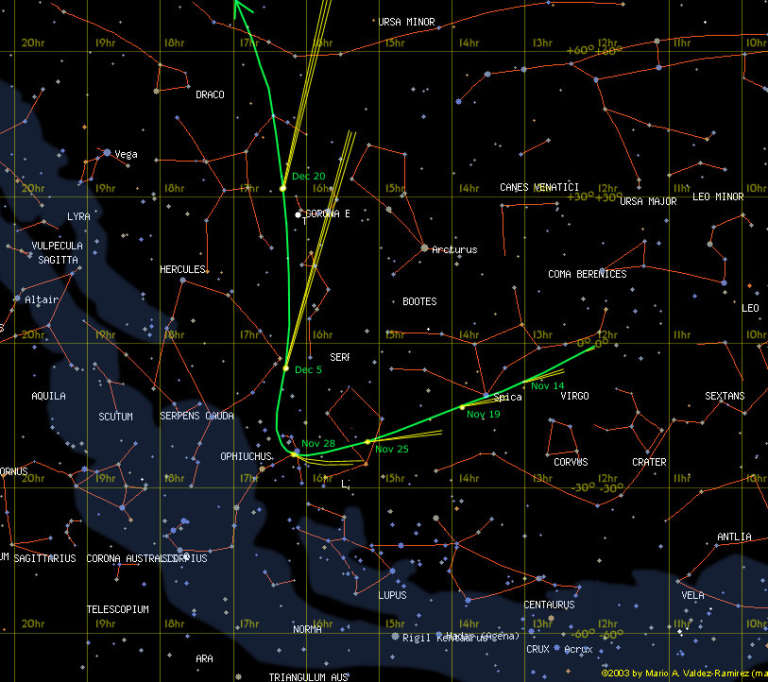Bill Gray • Sep 25, 2012
Comet ISON: 30% chance of awesome, 60% chance of that being wrong
Editor's note: Space blogs are abuzz about the recent discovery of comet C/2012 S1 (ISON), which has the potential to be a bright one late next year. I turned to amateur astronomer Bill Gray to ask for more details and whether I should be getting excited about this comet yet. Here's what he told me. --Emily Lakdawalla
It looks potentially very interesting indeed. The orbit is very well-determined. We can say, with complete confidence, that it'll come very close to the sun (about 0.012 AU, almost but not quite "sun-grazing") on 29 November 2013, plus or minus a day. At that point, it might get very bright, as some sungrazing comets have in the past (such as Ikeya-Seki in 1965, and C/2006 P1 McNaught in 2007).
So we're quite sure where it's going. The uncertain part (as always with comets) is how bright it'll be.
I expect that it'll at least be of considerable interest to comet observers, much as C/2006 P1 was. But estimating comet brightnesses a year ahead of time is about like asking who's going to win the World Series next year. It could be astonishingly bright, or it could fizzle. I think it was David Levy who said that comets are like cats: they have tails, and do whatever they want to do.
Right now, it's about 6.6 AU away, a bit past Jupiter. Comets sometimes "turn on" when they get to about 2.5 AU, suddenly increasing in brightness. That happened with C/2006 P1. Rob McNaught found it just outside that limit, and suggested (correctly, as it turned out) that it might get a lot brighter than was originally predicted. If we're lucky, that'll happen for this object. It'll reach 2.5 AU in August 2013.
I saw some speculation on the comets mailing list about what this new comet might look like after perihelion. Here, things get even more unpredictable; this is like predicting who will win the World Series three years from now. We know with certainty that it'll come within a mere .43 AU of the earth (on 28 December 2013, a month after perihelion). But it might boil away completely, as sungrazers often do; or it might survive and give us a nice show, as has sometimes also happened.
So, as to whether it's something about which to get excited: I'd give it about a 30% chance of being exciting, with a 60% chance that I'm wrong. In other words, it'll certainly bear keeping an eye on, but I don't think anyone can say for sure right now.

Support our core enterprises
Your support powers our mission to explore worlds, find life, and defend Earth. You make all the difference when you make a gift. Give today!
Donate

 Explore Worlds
Explore Worlds Find Life
Find Life Defend Earth
Defend Earth

